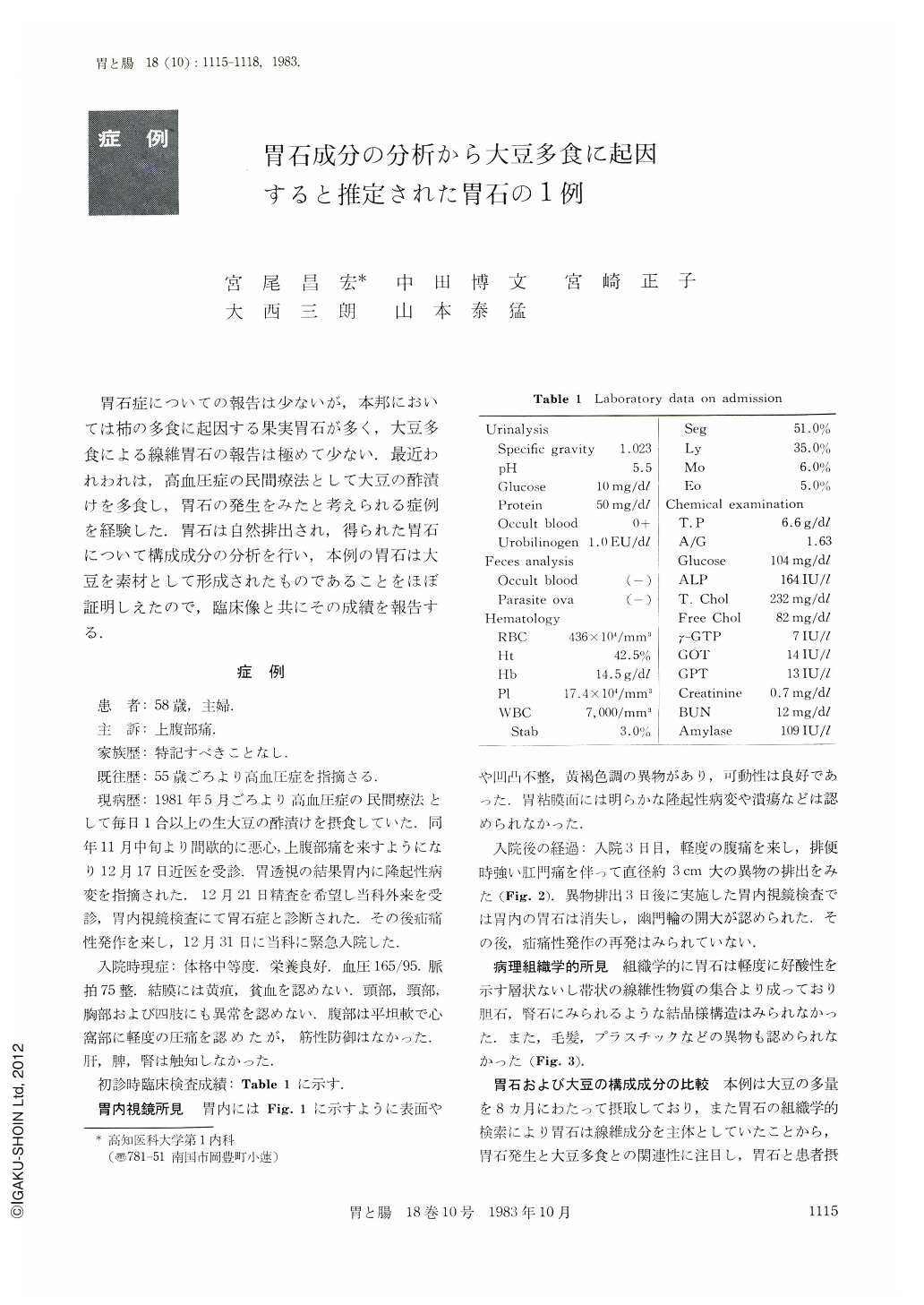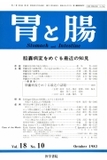Japanese
English
- 有料閲覧
- Abstract 文献概要
- 1ページ目 Look Inside
胃石症についての報告は少ないが,本邦においては柿の多食に起因する果実胃石が多く,大豆多食による線維胃石の報告は極めて少ない.最近われわれは,高血圧症の民間療法として大豆の酢漬けを多食し,胃石の発生をみたと考えられる症例を経験した.胃石は自然排出され,得られた胃石について構成成分の分析を行い,本例の胃石は大豆を素材として形成されたものであることをほぼ証明しえたので,臨床像と共にその成績を報告する.
A 58 year-old woman consulted to our hospital on 21 December 1981 with complaints of nausea and upper abdominal pain lasting since November 1981. She had been taking plenty of vinegared soybean since May 1981.
Endoscopic examination showed a yellowish-brown bezoar in the stomach, but showed no associated abnormal lesion on the gastric mucosa.
The bezoar with a diameter of 3 cm was spontaneously excreted in the stool following colicky abdominal pain on 2 January 1982. Histologically, the bezoar was composed of eosinophilic fibrous materials which formed lamellated or band-like structure.
Next, a comparative study between chemical constituent of the bezoar and that of soybean was performed. The content ratio of protein, lipid and carbohydrate was similar between them. Aminogram analysis of TCA insoluble fraction from them showed that ratio values of threonine, cerine, alanine, proline to grycine were quite similar.
Consequently, it was assumed that the bezoar in this case was formed mainly in the fashion of deposition of various components of soybean into the fibrous framework derived from soybean.

Copyright © 1983, Igaku-Shoin Ltd. All rights reserved.


